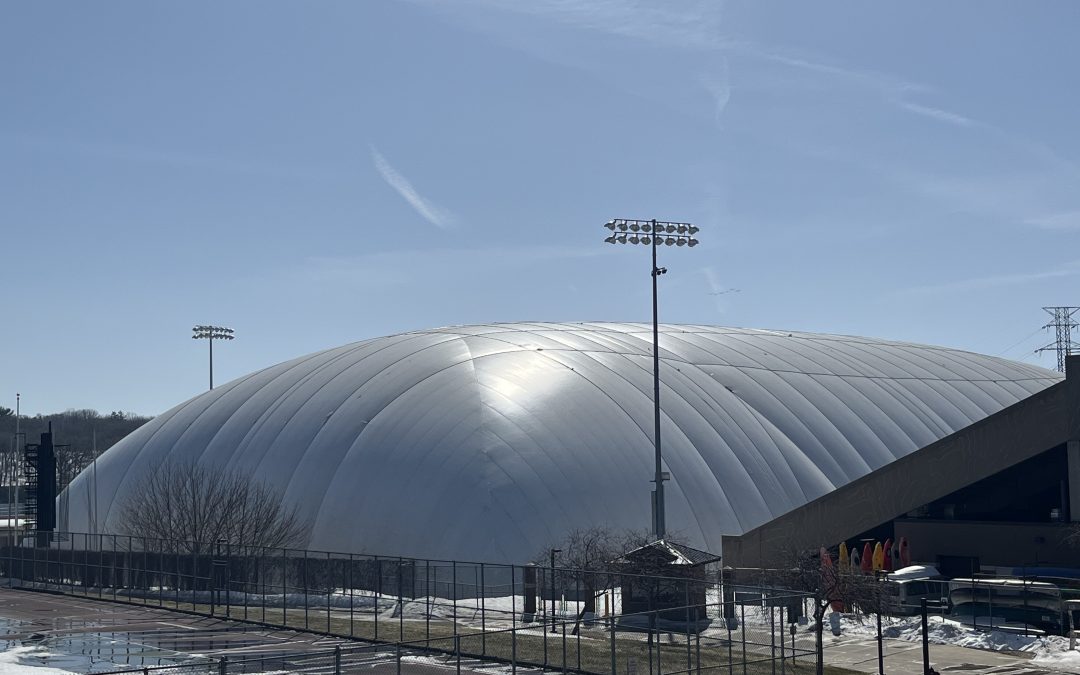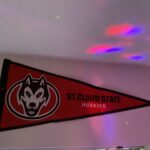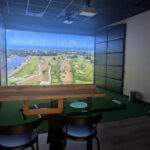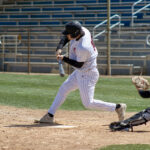Article Written by Joshua Brown. Photo by Joshua Brown.
The St. Cloud State sports dome has compensated Huskey Stadium for well over a decade, providing a valuable space for multiple sports teams and the outside community to train and compete during Minnesota’s long and very cold winter season. Now that spring weather is starting to show itself here in early April, that means the sports domes time is up and was taken down on April 11th.
Huskey Stadium, home to Huskies men’s and women’s soccer, was covered with the sports dome, a large inflatable structure, in early November. The dome is about 72 feet high and covers a field of omni-grass turf that stretches about 80 by 120 yards, with batting cages and a running track on the inside. The dome provides many benefits as it serves as an indoor sports facility with the purpose of protecting people from abrasive weather conditions when the outside stadium itself is not suitable or safe to use.
Sports specifically played in the dome include softball, baseball, lacrosse, rugby, and soccer. The dome is very useful in various ways, as it’s not only limited to St. Cloud Huskies athletes. It could be rented out by outside community members for an appropriate fee and utilized by intramural clubs and even high school sports teams.
“It serves multiple entities; it serves campus recreation for intermural sports, sport clubs, and informal play… It serves athletics for varsity competitions as well as practice and training, and it serves the community for external rentals for revenue generation,” said Director of Campus Recreation Calvin Diggs.
As for reversing the dome for use, it can be done through a system called, event management system, which is information system technology, that allows staff to implement reversions for those who are in need of using the dome. This software overall increases efficiency, making event planning processes effective and done in a timely manner.
Just like an outside stadium, the dome needs to be maintained throughout the winter season, which can be a difficult time as, according to Diggs, the biggest issue with maintaining the dome is keeping it clean and picking up trash after every use. “The main maintenance problem is making sure that all the trash that’s inside is emptied on a daily basis… and making sure that all equipment in the dome is placed in proper order,” said Diggs.
Moreover, Minnesota winters are quite dire due to the cold temperatures, and for sports to be played in the dome, it needs to be able to withstand winter conditions and maintain comfortable temperatures. If guests or Huskies athletes can’t stay warm inside, that can cause major issues and delays to their games, but to avoid this from happening, the dome has built-in heating systems that allow staff to control the climate from the inside.
The benefit of the dome is that winter conditions don’t affect or prevent one’s activities. It’s more about maintaining control from the inside. In addition, heavy snowfall doesn’t effect it either, so there’s never a worry about it caving in and collapsing because the snow falls off to the sides and melts down as the heat rises from the outside weather. Although the outside isn’t affected by winter conditions, strong winds tend to be the only issue it has dealt with because the air flow inside the dome doesn’t need to be at full capacity all of the time, which causes a slight bend from high winds.
“If the air flow into the dome is not at full capacity and we have high winds outside, the dome will bend and move with the wind, so we have to put in a work order to blow it, which stabilizes the dome… When I’ve been here, that’s been the biggest issue; we haven’t had any other major issues”, said Melissa Bates, assistant director of guest services, outdoor adventure, and student leadership.
Furthermore, “the dome has controlled heating on the inside… There are no major issues such as snow, wind, or rain, and its upkeep… the major problem with it is that when we put it up and take it down, there can be absolutely no wind, so the weather on the outside doesn’t bother it at all,” said Diggs.
As far as maintaining the dome overall, there are safety precautions and checks done before building it up and taking it down. Safety inspection is done by the company Yeadon, who specializes in creating sports domes and provides each of its clients with a high level of customization, care, and excellence. Once the dome is put up and meets inspection, Yeadon then provides a certificate of insurance just in case something were to happen.
Furthermore, taking down the dome and putting it back up may be considered two different projects, as one is a more complex process that takes longer, and in general, the expectations for both are very different. For putting up the dome, heavy machinery is used to place it on the field. Once placed on the field, there is a need for at least a hundred people to unfold it, drill holes in the seams, and then tuck it into a corner before blowing it up.
“We need hundreds of bodies to unfold and line up the dome fabric, where the seams are lined up, and then we get teams together that drill the seams together… Putting it up at minimum takes at least one day; it’s usually a 12 hour day for us depending how quickly we do it and the weather”, said Bates.
Taking the dome down is almost the same process as putting it up, as the steps are basically followed backwards, which is a much simpler process and takes less time to put back into storage. Overall, the dome is an all-hands-on-deck project that is done by volunteers, staff, sports club members, and student athletes.
In addition, the dome is a great indoor sports facility to use during the winter and is open to many individuals outside of the college community who make reservations. The dome overall isn’t’ affected by Minnesota’s winter conditions, and if there ever is an emergency, first responders are able to get their necessary equipment inside and handle an emergency situation effectively.






Recent Comments